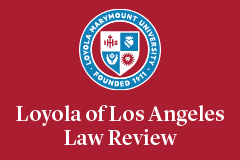Abstract
As Justice Brennan observed in Michael H. v. Gerald D. so many years ago, we must “identify the point at which a tradition becomes firm enough to be relevant to our definition of liberty and the moment at which it becomes too obsolete to be relevant any longer.” This Article addresses one such tradition, the legal presumption of paternity, and examines it through the lens of equal protection, the changing roles of fatherhood, and the evolution of marriage. The concept of who is a parent must change to both satisfy equal protection as well as modern scientific and societal realties. This Article argues that, historically, the constitutionally protected right to parent has been improperly conferred on a marriage rather than on an individual, particularly with respect to unwed natural fathers. This Article focuses on the need for a change in recognition of relationships between natural fathers and their children, particularly natural fathers of children born to intact marriages. Through that lens, this Article traces the genesis of the legal presumption of paternity in the United States. It then undertakes an in-depth review and analysis of the United States Supreme Court’s “unwed father” cases from Stanley v. Illinois to Michael H. from an equal protection perspective. After considering the equal protection concerns raised by the United States Supreme Court’s precedent, the Article proposes that, based on evolving notions of what fathers and marriages are today, the legal presumption should be relegated to an administrative convenience that is fully rebuttable and not limited by time. The Article then proposes that in order to accomplish this shift and fully recognize all biological parents’ rights, as well as the parental rights of others, another commonly held view must be challenged—that a child may only have two legal parents. The Article suggests that in such circumstances courts should recognize more than two parents in order to fully protect parental rights and the need for new parental forms is discussed. Finally, the Article proposes how such changes might be effected to better protect individual parental rights.
Recommended Citation
Heather Kolinsky,
The Ties That Bind: Reevaluating The Role Of Legal Presumptions Of Paternity,
48 Loy. L.A. L. Rev. 223
(2014).
Available at: https://digitalcommons.lmu.edu/llr/vol48/iss1/5


